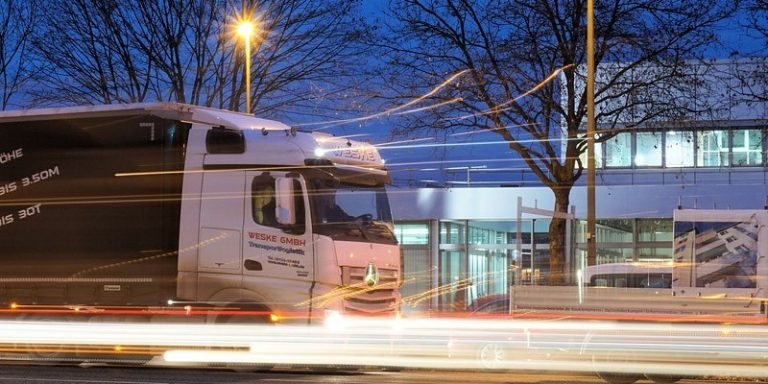
The non-governmental organisation (NGO) Together for Safer Roads (TSR), with the help of several partners, wishes to address the issue of truck driver safety. Artificial intelligence could be the solution to maximise the visibility and reaction time of truckers, especially in urban areas, when faced with the most vulnerable road users (cyclists, pedestrians, etc.). A call for projects was made last year to implement this idea.
The challenge of the visibility of truckers in the urban environment
To “humanize autonomy” thanks to the advances of AI: this is the objective of TSR with partners such as Anheuser-Busch InBev (Budweiser in particular), Republic Services, the city of New York, AT&T, CalAmp, Geotab, Lyft, Marsh, PepsiCo, Samsara, UPS and many others. The idea was born out of a simple observation related to blind spots: in the United States, a quarter of truck accident fatalities are due to low-speed maneuvers where lack of visibility is often the cause.
Thus, artificial intelligence and computer vision would be used to improve the visibility of drivers and their reaction time in this type of situation which could quickly become dramatic. David Braunstein, president of TSR, talks about the partnerships he has put in place to help truck drivers gain better visibility in their cabs.
“Our goal has always been to create strong partnerships between public and private fleets as well as municipalities in their spheres of operation. This evolution in fleet safety will help close the existing gap.”
The first projects implemented by Humanising Autonomy deployed in New York and Guadalajara
It was last autumn that TSR announced the Truck of The Future initiative to identify and test commercially viable technology solutions with a view to helping truckers analyse their blind spots more easily. The British company, Humanising Autonomy, was selected for the project.
The firm will leverage computer vision and its behavioural AI technologies to add nuanced understanding of vulnerable road user behaviour. The hardware and video capabilities of Humanising Autonomy’s partners, StreamMax and VisionTrack, will be used to complete the project.
The first pilot projects will be deployed in the United States, in New York City, and in Guadalajara, Mexico. These solutions should enable truckers to improve their reaction time to more vulnerable road users such as pedestrians and cyclists.
Translated from Exploiter l’intelligence artificielle et la vision par ordinateur pour améliorer la perception des camionneurs sur la route









